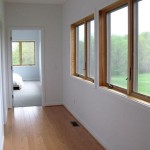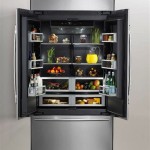Solid Interior Doors: A Comprehensive Guide
Solid interior doors, as the name suggests, are crafted from a single, solid piece of material, often wood, but also sometimes composite materials. They stand in contrast to hollow-core doors, which have a honeycomb or foam core within a hollow space. Solid doors offer a distinct set of advantages and considerations that make them a popular choice for various interior applications, from residential homes to commercial spaces.
Durability and Soundproofing
Solid interior doors are renowned for their durability and soundproofing capabilities. The solid construction provides inherent strength, resisting dings, dents, and scratches better than hollow-core doors. This makes them particularly suitable for high-traffic areas and homes with children or pets. Moreover, the density of the solid core effectively muffles noise transmission, creating a more private and peaceful interior environment. The denser the core, the better the soundproofing, but this also usually means a heavier door.
Consider the desired level of soundproofing when choosing a solid door. Doors with solid wood cores generally offer the most sound isolation, while those with engineered wood or composite core materials provide varying levels of sound reduction. Solid doors are also usually sturdier than hollow-core doors, especially in areas where privacy and noise reduction are important. They are also less likely to warp or sag over time.
Variety of Styles and Finishes
Solid interior doors offer a wide array of styles and finishes to complement any interior design aesthetic. Solid doors can be painted, stained, or even clad in various materials like veneers or laminates. This versatility allows for customization to match existing furniture, trim, and color palettes.
From classic shaker styles to modern minimalist designs, there's a solid door to suit every taste. Whether you prefer a traditional, rustic, contemporary, or eclectic style, solid door options can seamlessly integrate with your interior design vision. When selecting a door style, consider the overall architectural style of your home or space. For example, a traditional home may benefit from a classic six-panel door, while a modern home may look best with a sleek, minimalist door.
Cost and Maintenance
Solid interior doors typically fall into the higher price range compared to hollow-core doors. The cost of solid doors can vary based on the type of wood used, the complexity of the design, and the finish applied. However, their durability and long lifespan can be viewed as an investment in the long run. Solid wood doors can be refinished multiple times, extending their longevity even further.
Solid doors require a little extra care and maintenance compared to their hollow-core counterparts. Regular cleaning and occasional refinishing will help maintain their beauty and extend their lifespan. However, the effort involved in maintaining solid doors is usually outweighed by their aesthetic appeal and long-term durability.
When choosing solid interior doors, factors like budget, desired style, and desired level of soundproofing play a significant role. The benefits of solid doors often outweigh the initial cost due to their durability, sound isolation, and aesthetic versatility.

2 Panel Solid Core Interior Wood Doors White Painted Room Forest Bright Architectural

Masonite Solid Core Doors Bwi Distribution

Lauan Solid Core Prehung Interior Door Clear Flat Jamb No Casing Remodelers

Primed White Solid Core 1 Panel Shaker Mission Style Interior Door In 1011 Ksr And Mill Comany

Builders Choice 36 In X 80 5 Panel Shaker Solid Core Unfinished Fir Wood Interior Door Slab If75530c The Home Depot Doors For

Steves Sons 24 In X 80 2 Panel Arch Solid Core Oak Interior Door Slab J64o8nnnac99 The Home Depot

5 Panel Solid Core Interior Doors Redoux

Why Solid Interior Wooden Doors

Interior Doors Bayer Built Woodworks

Elegant Custom Interior Wooden Doors Estate Millwork








